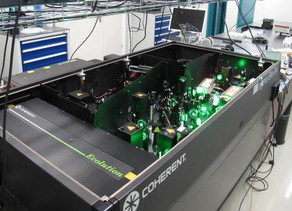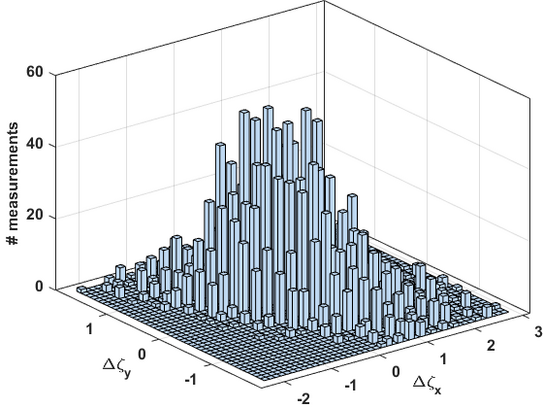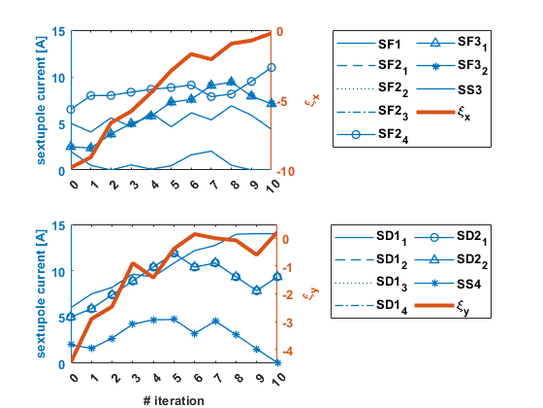Setting the chromaticity values
Energy deviations of electrons stored in a storage ring result in misfocusing effects in the quadrupole magnets. The chromaticity values of a storage ring quantify the sum of these misfocusing effects. Sextupole magnets can be used to variably adjust these chromaticity values within certain technical limits. The DELTA storage ring is equipped with a total of 13 individually controllable sextupole circuits, which are software-grouped into 7 families. Until now, the adjustment of the magnet circuit currents has been done manually based on empirical knowledge.
Similar to the procedure for adjusting operating points, an ML-based approach was utilized for automating the control in this context as well. In this case, the strengths of the sextupole magnets were systematically and randomly varied (actuator data), and the resulting influences on the chromaticity values were measured (sensor data). Using this data, Gaussian Process Regressors (GPR) as well as neural networks were trained. These models can then be used as predictive models for optimizing sextupole settings during operation. Investigations revealed that classical machine learning methods, such as conventional feed-forward neural networks, are suitable for regulating chromaticity in both simulation and real storage ring operations.
Furthermore, it was demonstrated that the separation of sextupole circuits increases the flexibility in achieving desired chromaticity values during actual storage ring operations. Further details are described in the IPAC-22 conference paper, the DELTA Annual Report 2022, and the master thesis [12].




![[Translate to English:] [Translate to English:]](/storages/delta/_processed_/1/2/csm_studium_seitenheader_1e3d243ce2.jpg)

